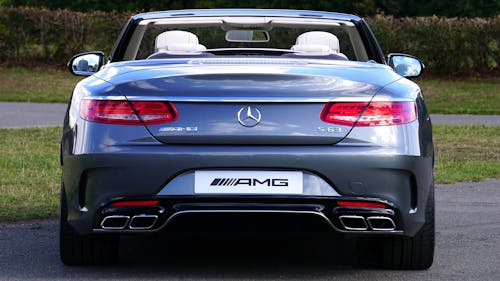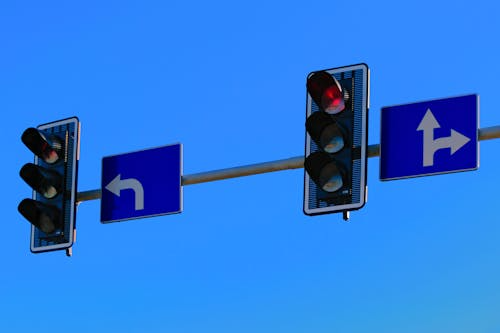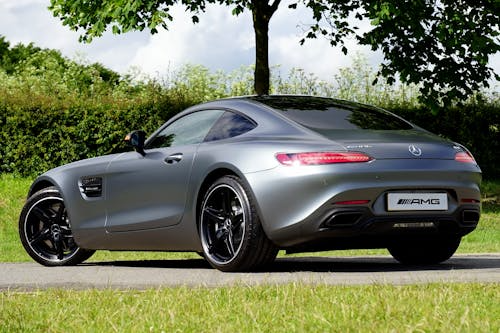The History and Development of Turn Signal Blinkers: From Early Days to Modern Times
Bliauto explores the history and development of turn signal blinkers, from early designs to modern innovations. Insights on manufacturing turn signal blinkers, brand manufacturers' turn signal blinkers, and brand turn signal blinkers.
- 1. The Origins of Turn Signals
- 1.1 Early Turn Signals
- 1.2 The Invention of the First Turn Signal Light
- 2. The Popularization and Evolution of Turn Signals
- 2.1 1930s: Early Adoption of Turn Signal Lights
- 2.2 1940s to 1950s: Automation of Turn Signals
- 2.3 1960s to 1970s: Legal Requirements for Turn Signals
- 3. Technological Evolution of Turn Signals
- 3.1 From Halogen to LED Technology
- 3.2 The Rise of Smart Turn Signal Systems
- 4. Modern Turn Signal Standards and Regulations
- 4.1 Flashing Frequency and Brightness
- 4.2 Legal Requirements
- 5. Frequently Asked Questions About Turn Signals
- 6. Conclusion
Turn signal blinkers, or simply blinkers, are an essential safety feature in modern vehicles. These simple yet crucial lights are designed to indicate a driver’s intention to change direction, providing a vital communication tool between drivers and enhancing road safety. From the earliest hand signals to today’s electronic and smart turn signal systems, the technology and design of blinkers have evolved considerably. This article delves into the history, development, and technological advancements of turn signal blinkers while addressing common questions surrounding their use.
1. The Origins of Turn Signals
1.1 Early Turn Signals
In the early days of automobiles, there was no standardized method of signaling turns. Drivers had to rely on hand signals to indicate their direction. When turning left, a driver would extend their left arm out the window; when turning right, they would extend their right arm. This system had several drawbacks, especially in situations with poor visibility or at high speeds, where it became difficult for other drivers to see the hand signals clearly.
In the late 1920s, with the increase in automobile traffic and the growing awareness of road safety, there was a real need for a more reliable signaling system. This led to the invention of the turn signal light.
1.2 The Invention of the First Turn Signal Light
In 1925, Charles Kip, an American inventor, developed the first turn signal light system. It used lights at the front and rear of the car that would flash to indicate a turn. This system was safer and more convenient than hand signals, as it was visible to other drivers from a greater distance, especially in adverse weather or low-visibility conditions. However, Kip’s invention did not immediately become widespread, as many drivers continued to rely on hand signals for some time. It wasn’t until later improvements and regulations that this lighting system started to gain traction.
2. The Popularization and Evolution of Turn Signals
2.1 1930s: Early Adoption of Turn Signal Lights
By the 1930s, automobile manufacturers began to recognize the practical utility of turn signal lights. While the first models still used manually operated electrical systems, these systems gradually became a standard feature in many vehicles. In the United States, as the automobile industry grew rapidly, manufacturers began adding turn signals to their vehicles as a safety feature.
In 1939, Chevrolet became one of the first car manufacturers to include turn signal lights as a standard feature. Prior to this, only high-end vehicles featured this technology, and its adoption was not yet universal. Over time, however, turn signal lights became standard in most vehicles.
2.2 1940s to 1950s: Automation of Turn Signals
During the 1940s, turn signal systems underwent further improvements, especially in terms of automatic cancellation. Initially, drivers had to manually turn off the signal after completing a turn. However, automatic cancellation mechanisms were introduced, making driving more convenient and safe. These early systems were mechanical, linked to the vehicle’s steering mechanism, which would automatically switch off the turn signal once the steering wheel returned to its neutral position.
By the 1950s, the design of turn signal systems became increasingly standardized, and electrical control systems began to replace mechanical systems, offering greater accuracy and reliability.
2.3 1960s to 1970s: Legal Requirements for Turn Signals
As road traffic increased globally and traffic accidents became more frequent, governments began to legislate for automobile safety. Many countries introduced regulations requiring vehicles to be equipped with turn signal lights, specifying minimum performance standards for flashing frequency, brightness, and design.
In 1966, the National Traffic and Motor Vehicle Safety Act was passed in the United States, mandating that all new vehicles be equipped with standardized turn signal lights, as well as specifying the flashing frequency and operational standards.

3. Technological Evolution of Turn Signals
3.1 From Halogen to LED Technology
In the 21st century, automotive lighting technology underwent a revolutionary change. Traditional halogen bulbs were gradually replaced by more energy-efficient and high-performance LED (Light Emitting Diode) lights. LED turn signals not only provide higher brightness but also respond more quickly, last longer, and consume less energy.
The use of LED technology also made turn signals more versatile. LED lights can create more complex optical effects, such as "sequential" or "flowing" turn signals, where the light travels from one side to the other. This design not only enhances aesthetics but also improves the visibility of the signal, thus contributing to road safety.
3.2 The Rise of Smart Turn Signal Systems
With the advancement of smart car technologies, turn signals are no longer just simple signaling devices. Modern smart turn signal systems are now integrated with other vehicle systems. For instance, some high-end vehicles have turn signals that interact with autonomous driving systems, collision warning systems, and more. These systems automatically activate turn signals based on the car’s movement or even remind the driver to turn them on if they forget.
Moreover, many modern vehicles come with dynamic lighting control systems, which can automatically adjust the flashing frequency or light pattern depending on the driving environment. For example, turn signals may flash more slowly on highways but speed up in urban areas to increase responsiveness.

4. Modern Turn Signal Standards and Regulations
As turn signal technology continues to evolve, there are strict regulations across the globe regarding the performance, brightness, and design of these lighting systems.
4.1 Flashing Frequency and Brightness
In most countries, the flashing frequency of turn signals is regulated to be between 60 and 120 flashes per minute. This standard is considered optimal for balancing visibility and road safety. In some high-end vehicles, the flashing frequency may be higher to ensure better visibility in heavy traffic.
Brightness is another important factor. Turn signals must be bright enough to be clearly visible during both day and night driving. Typically, LED turn signals are chosen for their higher brightness, but they are not allowed to be so bright as to cause discomfort or distraction to other drivers.
4.2 Legal Requirements
For example, in Europe, turn signals must comply with the ECE R48 standard, which sets specific regulations for automotive lighting and signaling systems. In the United States, turn signal lights are required to meet the FMVSS 108 (Federal Motor Vehicle Safety Standard 108), which regulates the design, installation, and operation of vehicle lighting systems.
In China, turn signals are governed by the GB 4785-2015 standard, which specifies brightness, flashing frequency, and their role in enhancing visibility and safety on the road.
5. Frequently Asked Questions About Turn Signals
1. What is the standard flashing time for turn signals?
Typically, the flashing frequency of turn signals is set between 60 to 120 flashes per minute, which means the time interval between each flash is approximately 0.5 to 1 second.
2. Why are my turn signals flashing too fast or too slow?
If your turn signal flashes too fast or too slow, it could be due to a bulb failure or an electrical issue. A fast flashing rate is often caused by a burnt-out bulb, while a slow rate might indicate a voltage drop or poor electrical connection.
3. How do modern vehicles prevent turn signals from being left on accidentally?
Modern vehicles are equipped with an automatic turn signal cancellation feature. This system detects when the turn is completed and automatically turns off the signal, reducing the risk of leaving it on by mistake.
4. How should I choose the right turn signal lights for my car?
When selecting turn signal lights, make sure they are compatible with your car model and meet local safety regulations. It is recommended to choose certified LED turn signals that comply with international standards to ensure optimal visibility and safety.

6. Conclusion
From early hand signals to today's intelligent lighting systems, turn signal blinkers have undergone significant technological advancements. These changes have not only improved road safety but have also made driving more convenient and enjoyable. As smart technologies continue to evolve, turn signal systems will likely become more integrated with the overall vehicle system, enhancing safety, environmental efficiency, and the overall driving experience.
Learn more about our automotive lighting products.

Bliauto Motorcycle Headlight - Model C1H-WA: High-quality LED design from leading brand manufacturers of motorcycle headlights. Precision Manufacturing Motorcycle Headlight ensures high visibility, durability, and easy fit for all riders.

Bliauto Motorcycle Headlight - Model C1H-HL: High-quality brand motorcycle headlight with durable LEDs, easy installation, and high-beam performance. Trusted brand manufacturers motorcycle headlights for safety. Choose Manufacturing Motorcycle Headlight quality.

Bliauto JS1 Jump Starter – Reliable Power On-the-Go As a brand manufacturer & wholesale jump starter supplier, Bliauto delivers high-quality portable power solutions. The JS1 Jump Starter provides instant engine starts, USB charging, and durable performance—ideal for emergencies. Trusted by professionals, it’s compact, safe, and backed by expert engineering. Wholesale options are available—power up with Bliauto! Optimized for SEO with target keywords while maintaining clarity and brand authority. Let me know if you'd like refinements!

The Bliauto Jump Starter - Model JS2 delivers reliable power on demand. As leading brand manufacturers of jump starter specialists, we offer high-quality, durable units. Perfect for wholesale jump starter needs, our manufacturing jump starter ensures safety and efficiency in every use.
Connect with Bliauto for Automotive LED Lights Solution
Bliauto is dedicated to designing innovative automotive LED lighting systems. Let's talk about your needs!
© 2025 Bliauto All Rights Reserved.

Bliauto
Bliauto Light
Bliauto
Bliauto Light
Bliauto
Whatsapp: +8618811846160